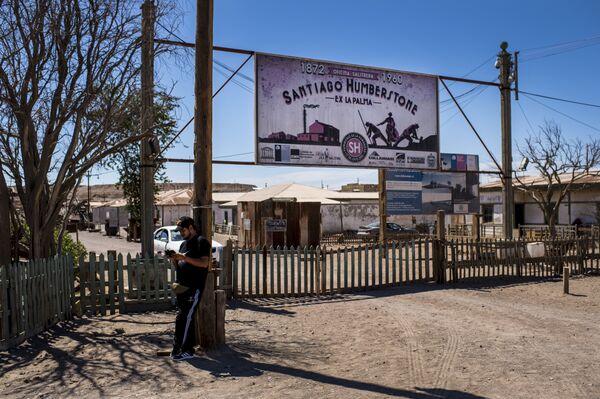Digging for saltpeter was a grueling business, but was well-paying for those who wished to work there. The town saw its heyday as a nitrate mining and processing center in the 1930s-1940s.

Even after synthetic nitrate developed in Europe more or less wiped out the bustling industry, Humberstone managed to upgrade its facilities and survived the crisis.

Digging for saltpeter was a grueling business, but was well-paying for those who wished to work there. The town saw its heyday as a nitrate mining and processing center in the 1930s-1940s.
Even after synthetic nitrate developed in Europe more or less wiped out the bustling industry, Humberstone managed to upgrade its facilities and survived the crisis.

The reserves of sodium nitrate eventually started running dry, however, and by 1959 the town's mines and plants had closed and its workers, some 3,000 in all, left to find new jobs.
The once thriving town became desolate, while people's abandoned possessions lay decaying. The towns were left to sit as they were when the last residents left, the dry sand from the encroaching desert drifting through the abandoned school and the theater.

At the factories, the machinery remains and the workers’ houses are around today, although a bit worse for the wear.
In 1970, the Chilean government declared Humberstone a national monument and the town became a UNESCO World Heritage Site in 2005.



